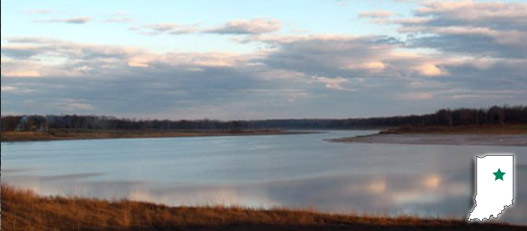J.E. Roush Lake FWA advisories
- The Indiana Department of Natural Resources has adjusted services, events and operations to protect Hoosiers and prevent further spread of COVID-19. Please visit on.IN.gov/dnrcovid19 for a listing of what is open, closed, restricted and canceled.
- Properties are operating hunt and trap draws differently in this year due to COVID-19. View the property procedures.
- All visitors must obtain a one-day access permit before entering the field, regardless of their activity. Visitors must keep their one-day access permit on them while visiting and must complete and return their permit to a self-service booth, drop-box, or the office before leaving.
- Description
J.E. (J. Edward) Roush Lake Fish & Wildlife Area is dedicated to providing quality hunting and fishing opportunities while maintaining 7,347 acres of land, 900 acres of lake, and 350 acres of impoundments. The property, which is approximately 15 miles long, is a long narrow band along the Wabash River.
J.E. Roush Lake, also known as Huntington Lake, was constructed in 1967 and is one of the three Upper Wabash Valley Lakes operating primarily as a unit with Mississinewa and Salamonie Lakes to control flood waters along the Wabash River Basin. J.E. Roush Lake also works secondarily with other lakes downstream in reduction of lower Wabash and Ohio River floods. The lake provides benefits to nearly 60,000 acres of agricultural lands and general recreational activities associated with hunting and fishing. The U.S. Army Corps of Engineers partners with Indiana Department of Natural Resources under a lease agreement. Indiana Division of Fish & Wildlife operates and maintains the recreation facilities and wildlife areas at the lake. J.E. Roush Lake was operated by Indiana Division of Reservoirs until 1998 and then by the Indiana Division of State Parks and Reservoirs until 2010.
Most revenues used in land acquisition, development, operation and maintenance of J.E. Roush Lake Fish & Wildlife Area are derived from the sale of hunting, fishing and trapping licenses. Funds are also derived from the federal Pittman-Robertson and Dingell-Johnson programs to aid fish and wildlife restoration. These funds are derived from taxes levied on the sport hunting, shooting and fishing equipment. Indiana hunters and fisherman are proud to provide this property for the enjoyment of all people.
- Activities
- Rules
- Maps

